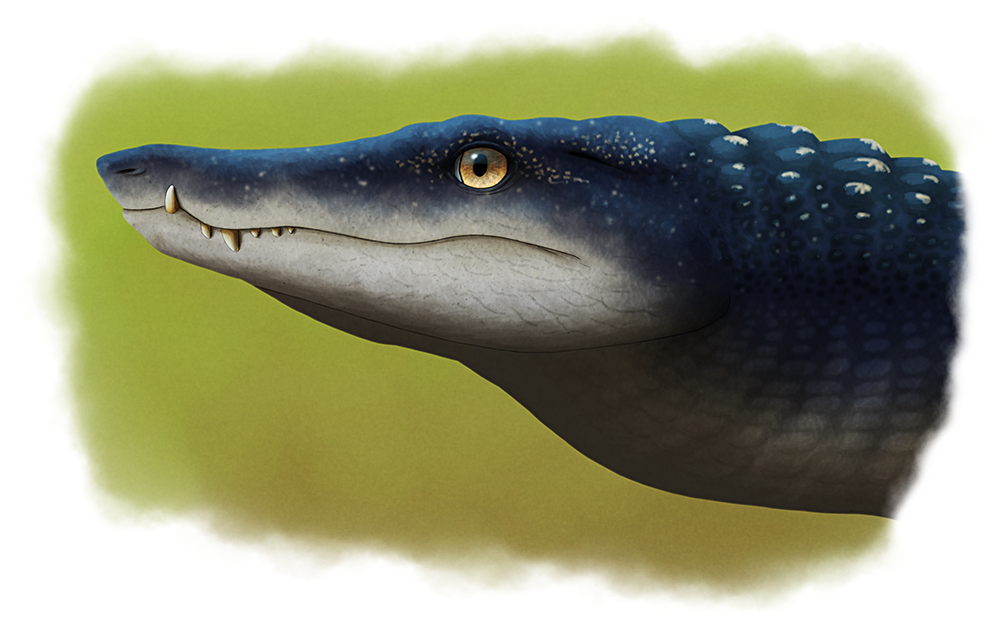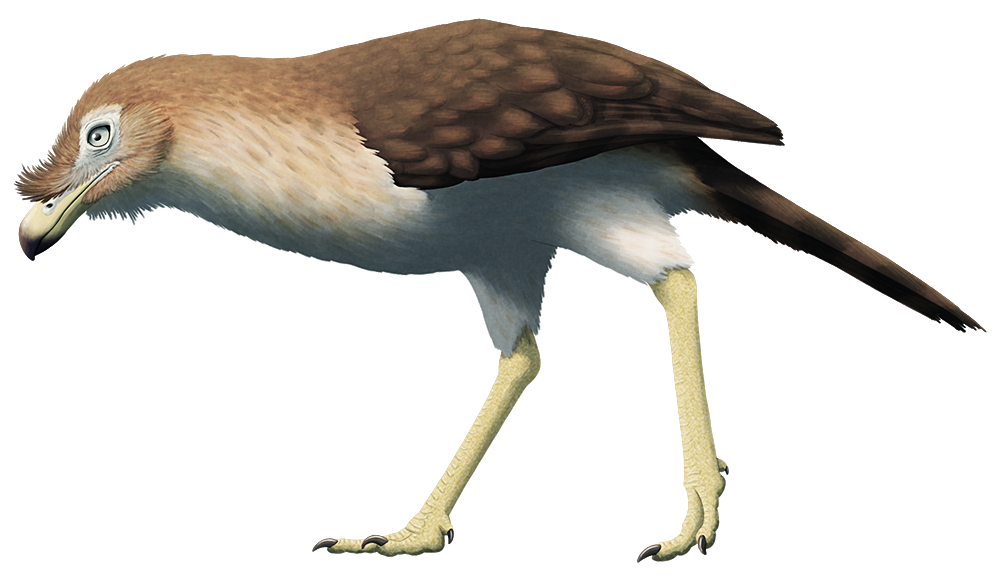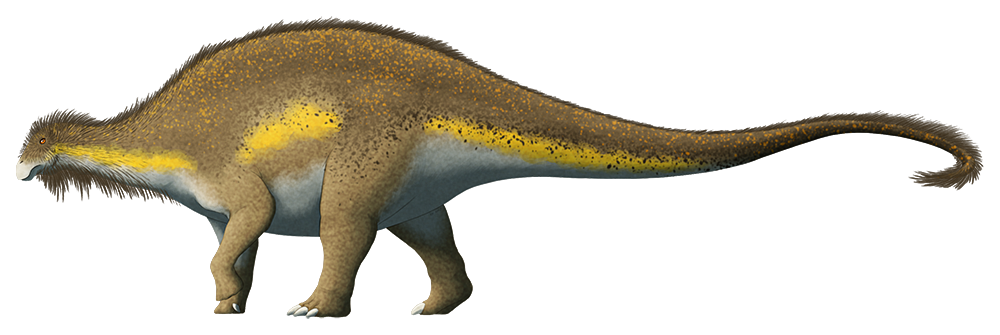Aaand we’re back to normal updates with a fully working computer again!
Let’s properly start off this year’s art pieces with a particularly weird sauropod dinosaur. This is Brachytrachelopan, known from Argentina at the very end of the Jurassic (~152-145 mya).
A member of the dicraeosaurids, it was a close relative of the spiky-necked Amargasaurus and was roughly the same size at about 10m long (32′9″) – but it also had the shortest neck of any known sauropod, suggesting it was specialized for a completely different diet. It may have been a sort of “iguanodont-mimic”, adapted to a low browsing niche, since actual iguanodonts were absent from its ecosystem.
I’ve given this one a little bit of speculative bristly fuzz, because I can. While all currently known sauropod skin impressions show scales, we don’t have full-body coverage and fuzz was almost certainly present in their ancestors – and both types of integument can also exist on the same animal in the same places.
Also I just like the idea of sauropods with manes and beards.



